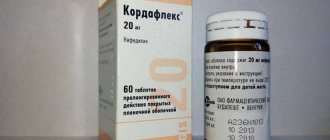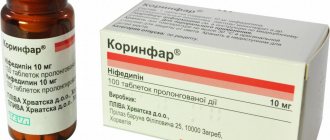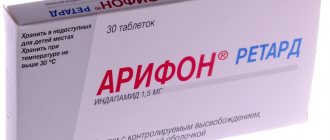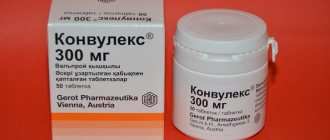Betmiga
- hypersensitivity to the active substance or any of the excipients of the drug;
- children's age (lack of data on effectiveness and safety);
- pregnancy and breastfeeding;
- end-stage renal failure (eGFR)
- severe stage of renal failure (eGFR 15-29 ml/min/1.73 m2) with simultaneous use of strong inhibitors of the CYP3A isoenzyme;
- severe stage of liver failure (class C on the Child-Pugh scale);
- moderate stage of liver failure (class B on the Child-Pugh scale) with simultaneous use of strong inhibitors of the CYP3A isoenzyme.
The drug is prescribed with caution to the following categories of patients:
Patients with renal and liver failure.
Patients with severe renal failure should be treated with caution and the dose should not exceed 25 mg/day.
Patients with mild to moderate renal failure concomitantly taking strong CYP3A inhibitors should be treated with caution and the dose should not exceed 25 mg/day.
Patients with moderate liver failure should be treated with caution and the dose should not exceed 25 mg/day.
Patients with mild hepatic impairment (Child-Pugh Class A) concomitantly taking strong CYP3A inhibitors should be treated with caution and the dose should not exceed 25 mg/day.
Patients with uncontrolled severe hypertension
Since no studies have been conducted with the drug in patients with uncontrolled severe arterial hypertension (systolic blood pressure >180 mm Hg and/or diastolic blood pressure >110 mm Hg), the drug is not recommended for use in this category of patients.
There are only limited data regarding the use of the drug in patients suffering from stage 2 hypertension (systolic blood pressure>160 mm Hg and/or diastolic blood pressure>100 mm Hg).
Patients with congenital or acquired QT prolongation
Mirabegron at therapeutic doses did not demonstrate clinically significant prolongation of the QT interval in the studies conducted. However, since patients taking drugs that may cause QT prolongation did not participate in these studies with mirabegron, the effect on these patients is not known. This category of patients should take mirabegron with caution.
Caution should be used in combination with drugs that have a narrow therapeutic index and drugs that are significantly metabolized by CYP2D6, such as thioridazine, drugs for the treatment of Type 1C arrhythmias (for example, flecainide, propafenone) and tricyclic antidepressants (for example, imipramine, desipramine). Mirabegron should also be taken with caution when co-administered with drugs that are metabolized by the CYP2D6 isoenzyme and the dose of which must be individually determined.
Pregnancy
There are limited data on the use of mirabegron during pregnancy. Results from animal reproductive toxicity studies do not indicate direct or indirect negative effects of mirabegron. To prevent possible negative effects on the fetus, the use of the drug should be avoided in pregnant women and women of childbearing age who are not using contraception.
Lactation period
In rodents, mirabegron is excreted in breast milk, therefore, in humans there is also a risk of the drug passing into breast milk. There are no studies examining the effect of mirabegron on breast milk production, the excretion of mirabegron in breast milk and the effect on the child. The drug should not be used by women during breastfeeding.
Betmiga, 50 mg, extended-release film-coated tablets, 10 pcs.
Pharmaceutical group: Drugs for the treatment of urological diseases / Pharmaceutical action: Mirabegron is a powerful selective beta3-adrenergic receptor agonist. Studies with mirabegron have demonstrated relaxation of bladder smooth muscle in rats and in isolated human tissue, as well as an increase in cAMP concentrations in bladder tissue in rats. Thus, mirabegron improves the reservoir function of the bladder by stimulating beta3-adrenergic receptors located in its wall. Studies have demonstrated the effectiveness of mirabegron both in patients who have previously received M-anticholinergics for the treatment of overactive bladder (OAB), and in patients without a history of previous therapy with M-anticholinergics. Mirabegron was also effective in patients with OAB who discontinued M-anticholinergic treatment due to lack of effect. Urodynamics. A 12-week study in men with lower urinary tract symptoms (LUTS) and bladder outlet obstruction (IVO) demonstrated the safety and good tolerability of mirabegron at doses of 50 and 100 mg once daily, and no effect of mirabegron on cystometric parameters. Effect on QT interval. At doses of 50 mg and 100 mg, mirabegron had no effect on the heart rate-corrected QT interval (QTcI value), which was recorded in the analysis for groups by gender and for the entire group of patients. The effect of repeated oral administration of mirabegron at a therapeutic dose (50 mg once daily) and supratherapeutic doses (100 and 200 mg once daily) on QTcI was studied in a separate study (TQT study) (n = 164 healthy male volunteers and n = 153 healthy female volunteers). In both men and women receiving mirabegron 50 and 100 mg, the upper limit of the one-sided 95% confidence interval for the largest time-matched difference from placebo in QTcI did not exceed 10 ms at any time point. Effect on pulse rate and blood pressure in patients with OAB. In a 12-week, double-blind, placebo-controlled, phase 3 study in patients with OAB (mean age 59 years) receiving mirabegron 50 mg once daily, there was an increase in baseline mean difference from placebo in heart rate (by 1 bpm) ) and systolic blood pressure/diastolic blood pressure (SBP/DBP) (by about 1 mmHg or less). Changes in heart rate and blood pressure during treatment are reversible and disappear after discontinuation of the drug. Effect on intraocular pressure (IOP). 56 days after starting treatment with mirabegron at a dose of 100 mg once daily, no increase in IOP was observed in healthy volunteers. A phase I study (n = 310) assessed the effect of mirabegron on IOP using Goldmann applanation tonometry: mirabegron 100 mg did not differ from placebo in the effect size with respect to the mean change in baseline mean individual IOP values at day 56. Pharmacokinetics: Absorption. Following oral administration, mirabegron is absorbed into the bloodstream and reaches its maximum plasma concentration (Cmax) between three and four hours after administration. Studies have shown an increase in absolute bioavailability from 29% to 35% after increasing the dose from 25 mg to 50 mg. In this case, the average Cmax value and the AUC value increased more than in proportion to the dose. Equilibrium concentrations are achieved after 7 days of taking mirabegron once a day. After repeated once-daily administration, plasma concentrations of mirabegron at steady state are approximately twice as high as those after a single dose of the drug. The effect of food intake on drug absorption. Phase 3 studies demonstrated the same effectiveness and safety of treatment when taking mirabegron during and outside meals. Thus, the recommended dose of mirabegron can be taken both during and outside meals. Distribution. Mirabegron is intensively distributed in the body. The volume of distribution under stable conditions (Vss) is approximately 1670 l. Mirabegron is approximately 71% protein bound in plasma and also exhibits moderate affinity for albumin and alpha-1 acid glycoprotein. Mirabegron is distributed to red blood cells. Concentrations of 14C-labeled mirabegron in erythrocytes were 2 times higher than in plasma (as shown in in vitro studies). Metabolism. There are many pathways for mirabegron metabolism in the body, including dealkylation, oxidation, (direct) glucuronidation and amide hydrolysis. After a single administration of 14C-mirabegron, the main circulating component is mirabegron. Two main metabolites of mirabegron were found in human plasma: both are glucuronides (phase II metabolites) and constitute, respectively, 16% and 11% of the total drug concentration. These metabolites do not have pharmacological activity. Despite the participation of the enzymes CYP2D6 and CYP3A4 in the oxidative pathway of mirabegron metabolism in vitro, in vivo the role of these isoenzymes in the overall elimination is small. Excretion. The total clearance (Cltotal) of the drug is approximately 57 l/hour. The terminal half-life (t1/2) is approximately 50 hours. Renal clearance (Clren) is approximately 13 l/hour, which corresponds to almost 25% of the Cltot value. The main mechanisms of excretion by the kidneys are active tubular secretion and glomerular filtration. The amount of unchanged mirabegron excreted in the urine is dose-dependent and varies from 6.0% after taking the drug at a daily dose of 25 mg to 12.2% after taking a daily dose of 100 mg. After administration of 160 mg of 14C-mirabegron to healthy volunteers, approximately 55% of the tracer was detected in urine and 34% in feces. The unchanged mirabegron fraction accounted for approximately 45% of the total isotopically labeled drug in urine, indicating the presence of metabolites. Most of the isotopically labeled drug in the feces was represented by unchanged mirabegron. Features of pharmacokinetics in certain categories of patients: Age. In elderly patients, there is no need for dose adjustment. In studies, Cmax and AUC values for mirabegron and its metabolites were similar in older (≥ 65 years) and younger volunteers (18-45 years). Floor. No dose adjustment is required depending on the gender of the patient. Race. No dose adjustment is required depending on the patient's race. Race does not affect the pharmacokinetics of the drug.
Description of the drug BETMIGA
Mirabegron is a moderate, time-dependent inhibitor of CYP2D6 and a weak inhibitor of CYP3A. At high concentrations, mirabegron inhibited drug transport via P-glycoprotein.
Clinically significant interactions between mirabegron and medicinal products that inhibit, activate or are a substrate of one of the CYP isoenzymes or transporters are not expected, with the exception of the inhibitory effect of mirabegron on the metabolism of CYP2D6 isoenzyme substrates.
Mirabegron concentration (AUC) increased 1.8-fold under the influence of the strong CYP3A/P-gp inhibitor ketoconazole in healthy volunteers. Dose adjustment of mirabegron is not required when taken together with inhibitors of the CYP3A or P-gp isoenzyme. However, in patients with mild to moderate renal impairment (eGFR 30-89 ml/min/1.73 m2) or mild hepatic impairment (Child-Pugh class A) taking strong CYP3A inhibitors such as itraconazole, ketoconazole, ritonavir and clarithromycin, the recommended daily dose of mirabegron is 25 mg, regardless of meals.
Substances that induce CYP3A or P-gp isoenzymes reduce the plasma concentration of mirabegron.
In healthy volunteers, mirabegron moderately inhibits the CYP2D6 isoenzyme, the activity of which is restored 15 days after discontinuation of mirabegron. Daily dosing of mirabegron resulted in a 90% increase in Cmax and 229% increase in AUC for a single dose of metoprolol. Daily dosing of mirabegron resulted in a 79% increase in Cmax and 241% increase in AUC for a single dose of desipramine. Mirabegron should be used with caution in combination with drugs that have a narrow therapeutic index and drugs that are significantly metabolized by CYP2D6, such as thioridazine, drugs for the treatment of class I C arrhythmias (for example, flecainide, propafenone) and tricyclic antidepressants (for example, imipramine, desipramine). Mirabegron should also be taken with caution when co-administered with drugs that are metabolized by the CYP2D6 isoenzyme and the dose of which must be individually determined.
Mirabegron is a weak inhibitor of the P-gp protein. Mirabegron increased Cmax and AUC by 29% and 27%, respectively, when administered with digoxin to healthy volunteers. For patients starting to take mirabegron and digoxin at the same time, digoxin should be taken at the lowest dose. In this case, it is necessary to monitor the concentrations of digoxin in the blood plasma and select a further effective dose of digoxin based on the results of control tests. The potential for P-gp inhibition by mirabegron should be taken into account when mirabegron is administered concomitantly with drugs transported by P-gp proteins, such as dabigatran.
The increased effect of mirabegron when taken together with other drugs is expressed in an increase in heart rate.






